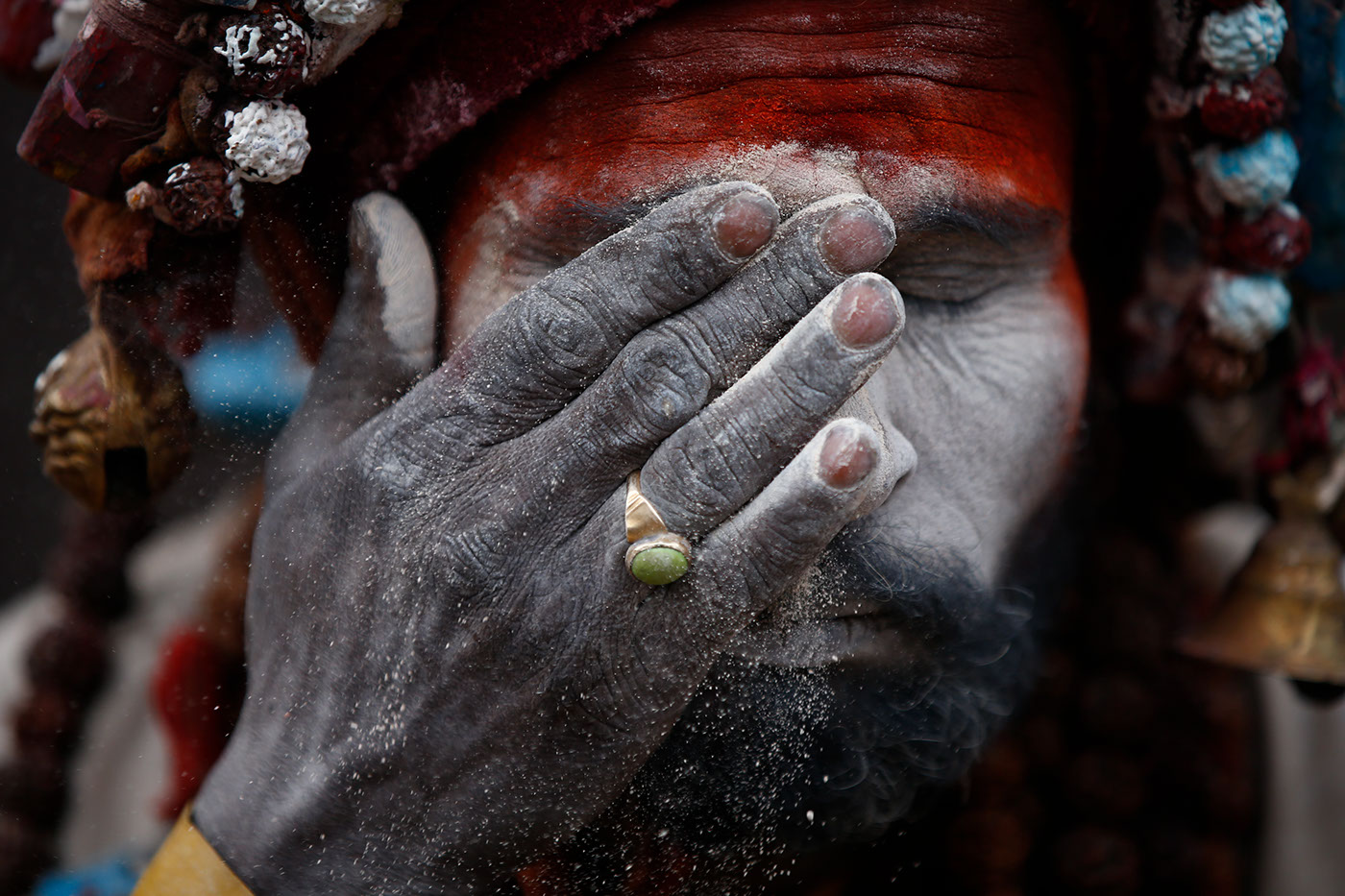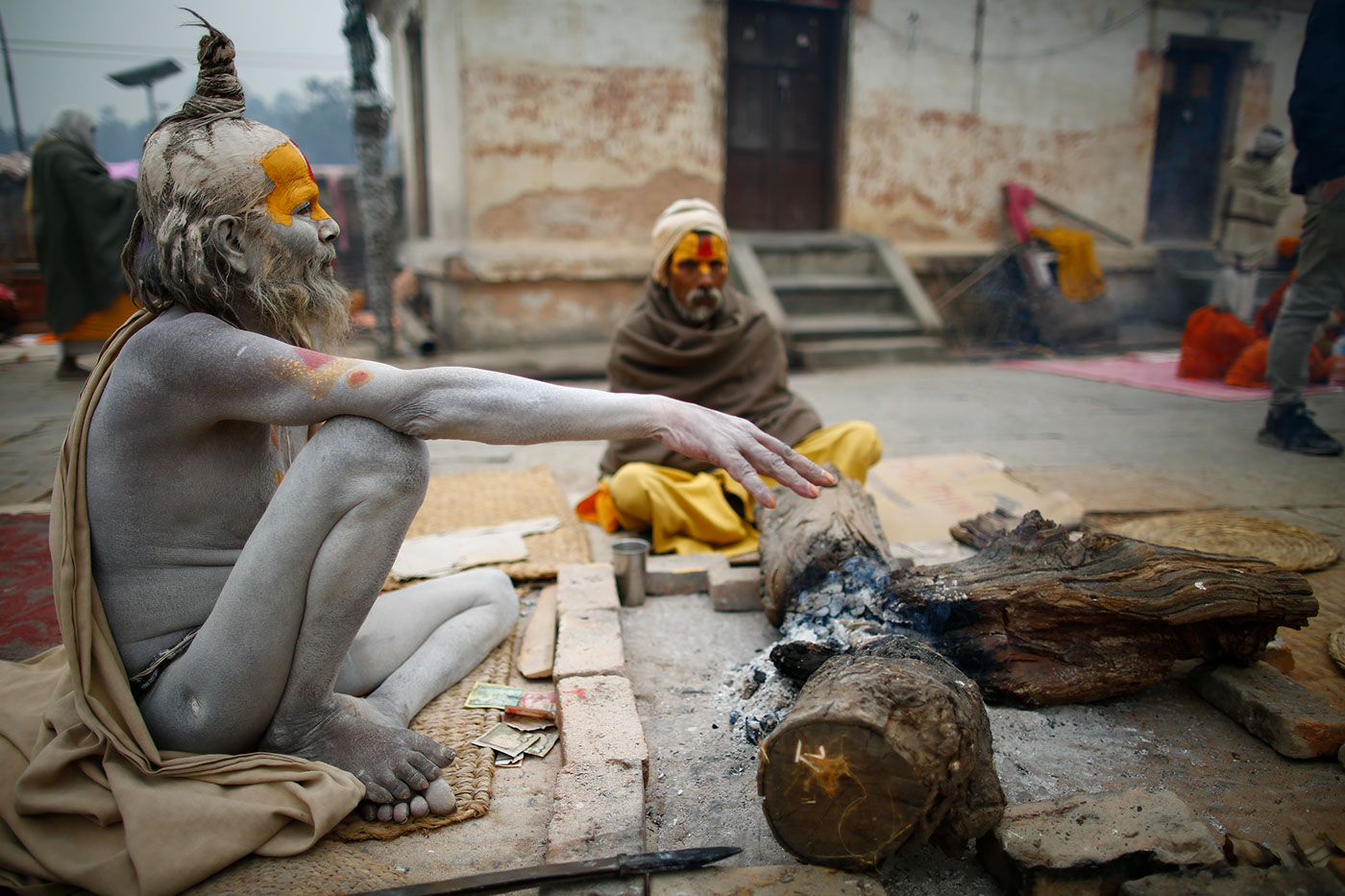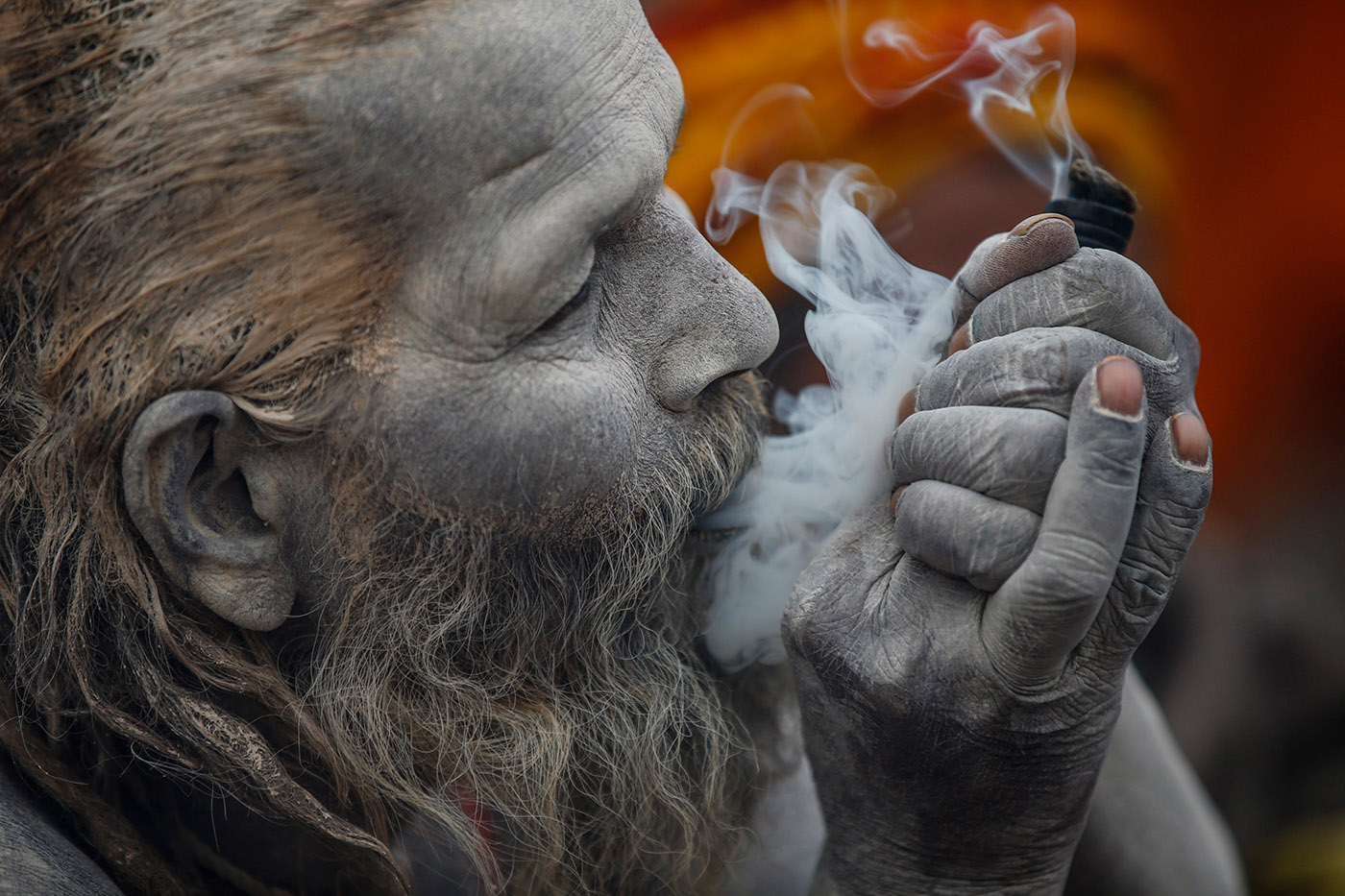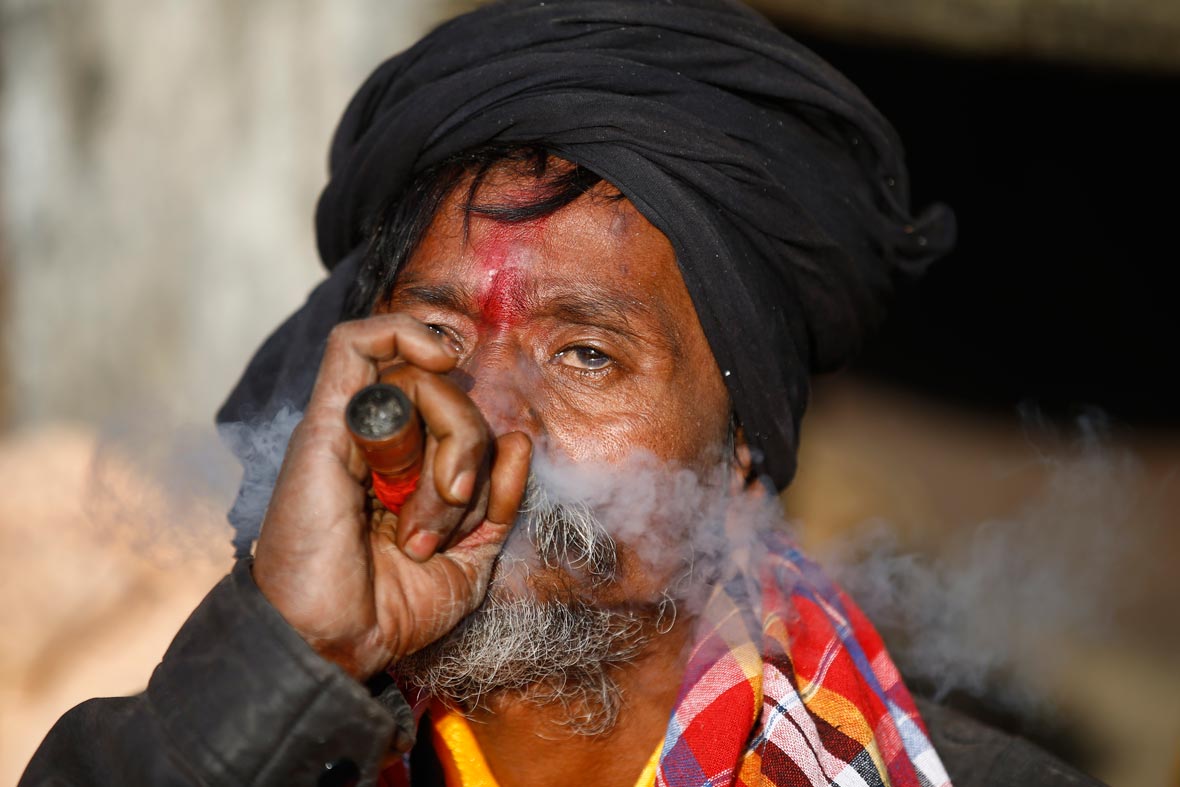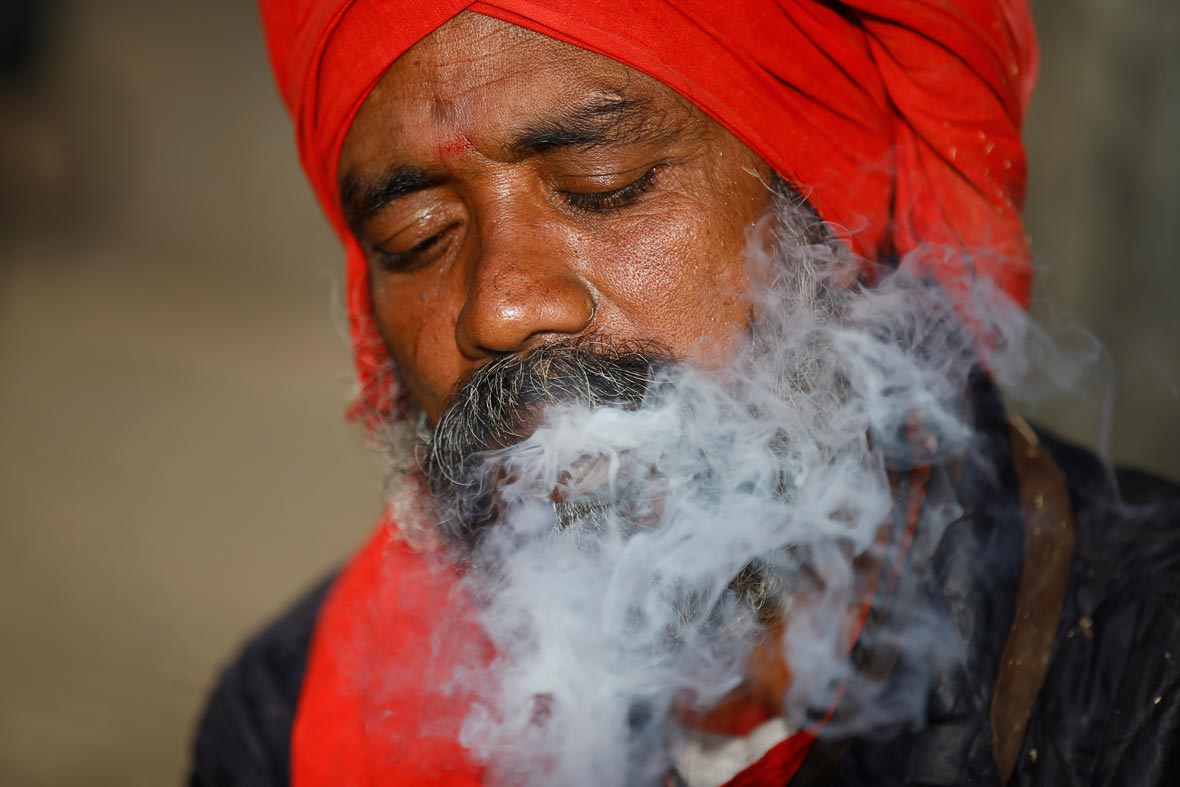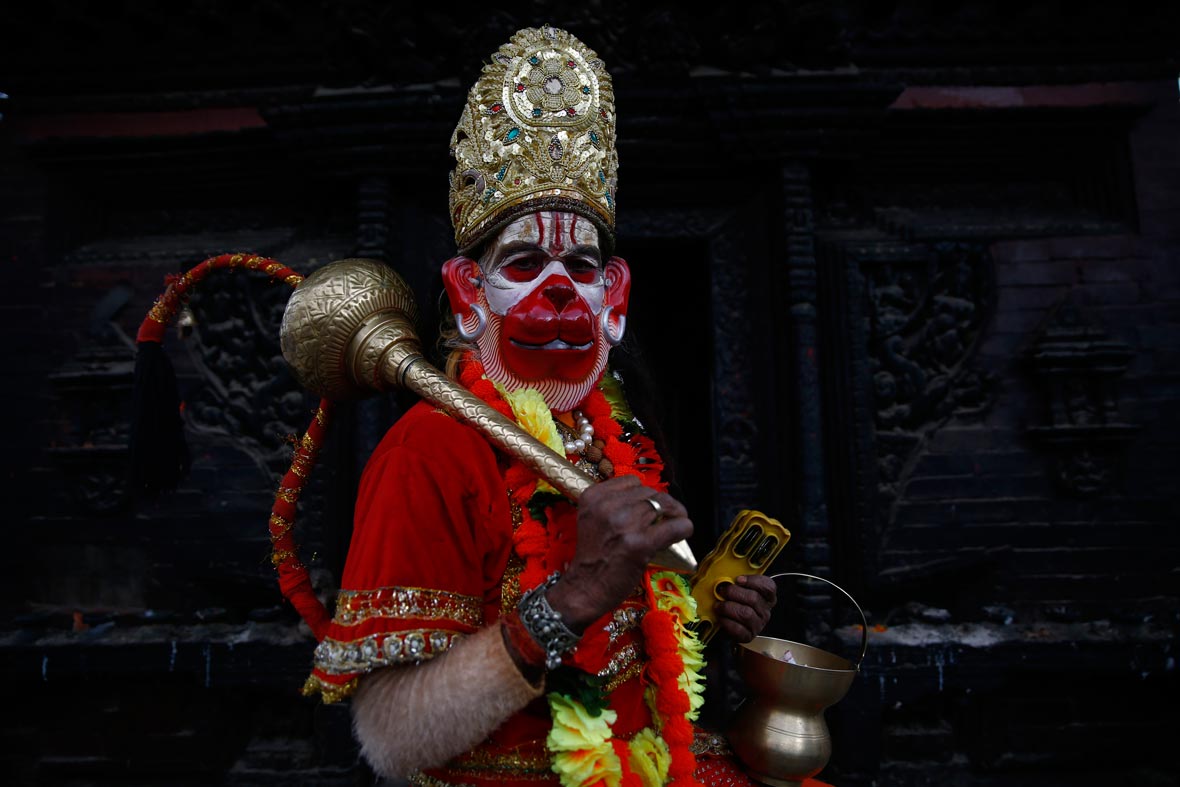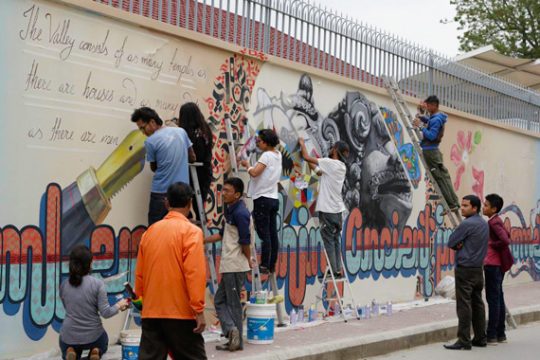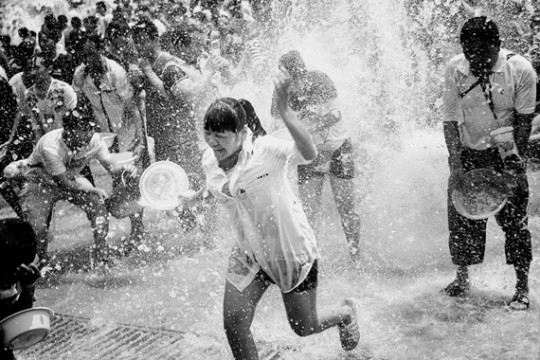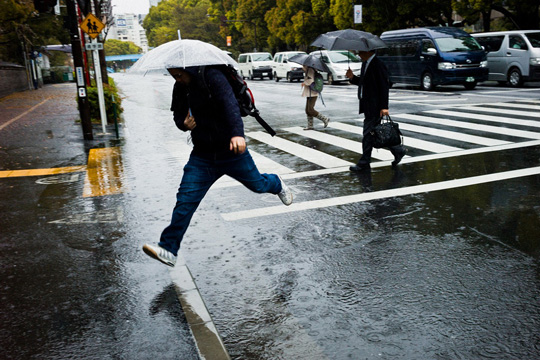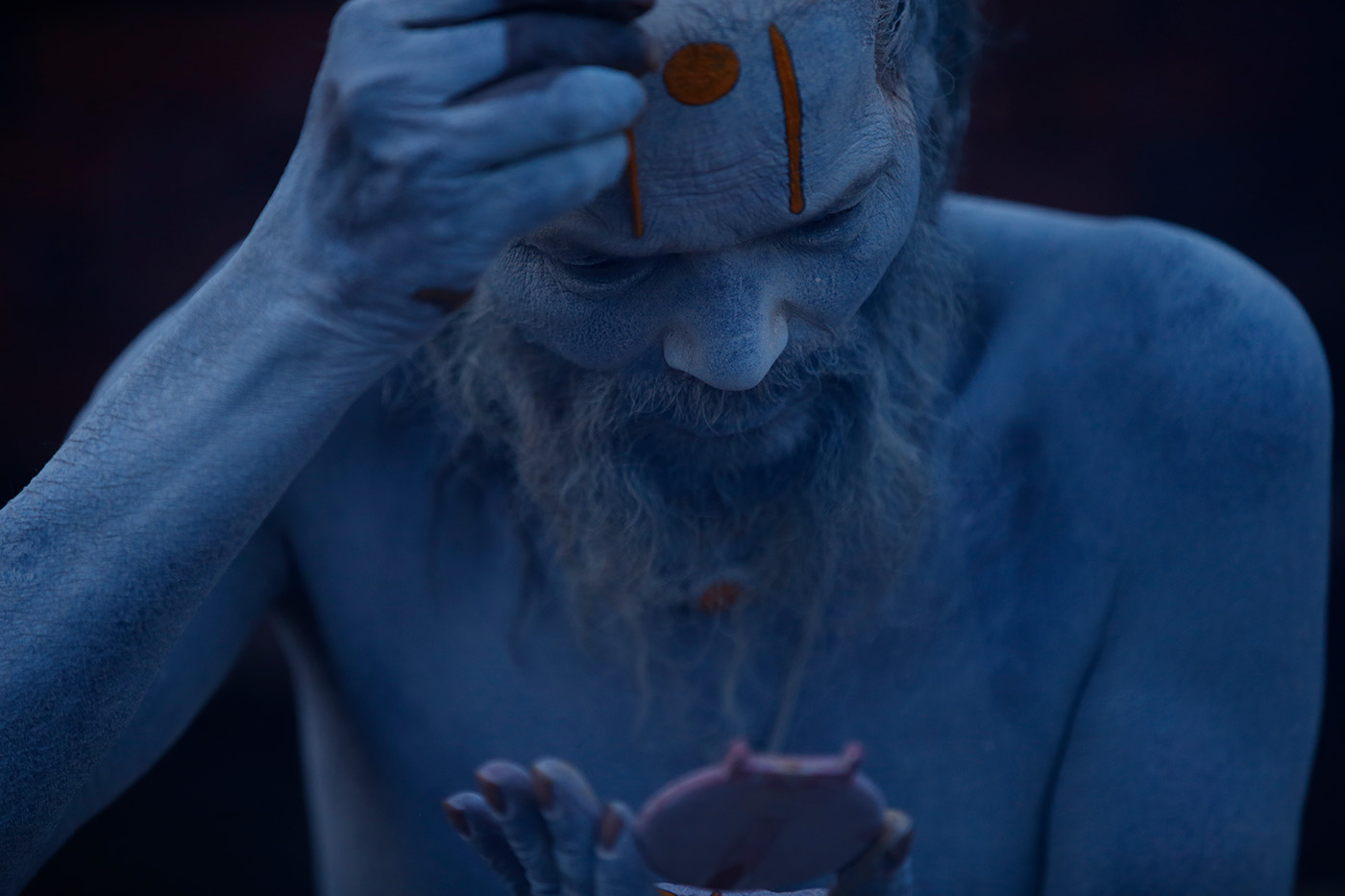
Every year between late February and early March, Maha Shivaratri—or the Great Night of Shiva—is celebrated all over India and Nepal. As the name suggests, it’s a celebration dedicated to Shiva the destroyer, one of the three gods of the Trimurti, or triple supreme deities of Hinduism. Some claim that the festival is a celebration of Shiva’s marriage to the goddess Parvati. Others claim it’s to commemorate the day Shiva reached enlightenment. There are many different stories for what the festival celebrates, and there is no consensus on its origins.
Kathmandu is filled with worshippers during Maha Shivaratri. Countless Hinduists make the pilgrimage to Nepal’s capital to visit the Pashupatinath Temple, one of the most important religious sites for devotees of Shiva, and bring offerings of flowers and fruits in hopes of being blessed with an auspicious year.
Skanda Gautam is a Nepalese photojournalist, who, for the past six years, has taken to the streets of Kathmandu with camera in hand to capture the celebrations. “One of the toughest things about shooting Maha Shivaratri is how crowded it gets,” he says. “I try to get my shots on the eve of the festival or in the early morning before the temple-goers come out in droves.” And amidst the hustle and bustle of these religious festivities, he’s decided to train his camera on one specific subject: the sadhus.
每年二月底至三月初,尼泊尔迎来一年一度的湿婆节(Maha Shivaratri,也称 Great Night of Shiva),以庆祝印度教三大主神之一——毁灭之神湿婆神的生日(关于湿婆节的由来说法不一,有人称是湿婆神与帕尔瓦蒂女神的结婚纪念日,也有人说是湿婆神的成道日。众说纷纭,至今都尚未有定论。)
此时,成群结队的印度教信徒聚集在首都加德满都的街道上,大多人的目的地是供奉湿婆神的主庙——最为神圣的帕舒帕蒂纳特庙。他们带着鲜花供果,想着为自己接下来的一年祈求祝福。
一位土生土长于加德满都的摄影记者 Skanda Gautam,也带着相机挤在人群之中,按照自己过去六年来的习惯,上街拍摄这个神圣的节日。“湿婆节难以拍照的原因之一,就是人实在太多了!所以我几乎都会选在节日前夕或是一大早去拍照,避开步行前往庙宇的人潮。” 而在这浓厚的宗教氛围之下,他尤其将镜头对准了湿婆节中一种特殊的人群——苦行僧。
Sadhus are holy men who typically live in seclusion, but during Maha Shivaratri, they show up to attend the festivities. With faces decorated in ash and saffron-colored paint, the sadhus are practitioners of asceticism who seek to attain moksha, freedom from the cycle of death and rebirth. Many sadhus openly smoke cannabis during the festival, as the government temporarily lifts a ban on the drug for its use in ascetic rituals. Shiva himself is said to have smoked the drug, and some of his devotees believe it helps them achieve a higher spirituality. Gautam’s portraits offer an intimate look at these sages, their unwavering religious devotion, and the vibrant colors of Nepalese traditions.
平常深居简出的苦行僧,这时也会露面与信徒们一起欢庆湿婆节。他们往自己的脸上涂满白色灰烬,有时候还会有猩红或鲜黄色的颜料装饰。他们深信借由苦行这种修炼方式(比如禁欲、或降低物质生活)能够换取精神上的自由和灵魂的解脱,早日摆脱无尽的轮回之苦。
而那些弥漫街道的烟雾,是大麻的烧烟。在节庆期间吸食大麻是合法的,因为传说湿婆神也喜欢大麻,并会通过吸食它来加深修行。Skanda 用这一系列肖像摄影为我们打开了一片视野,让我们能近距离看见这些拥有虔诚信仰的僧人、和尼泊尔多彩的传统景色。
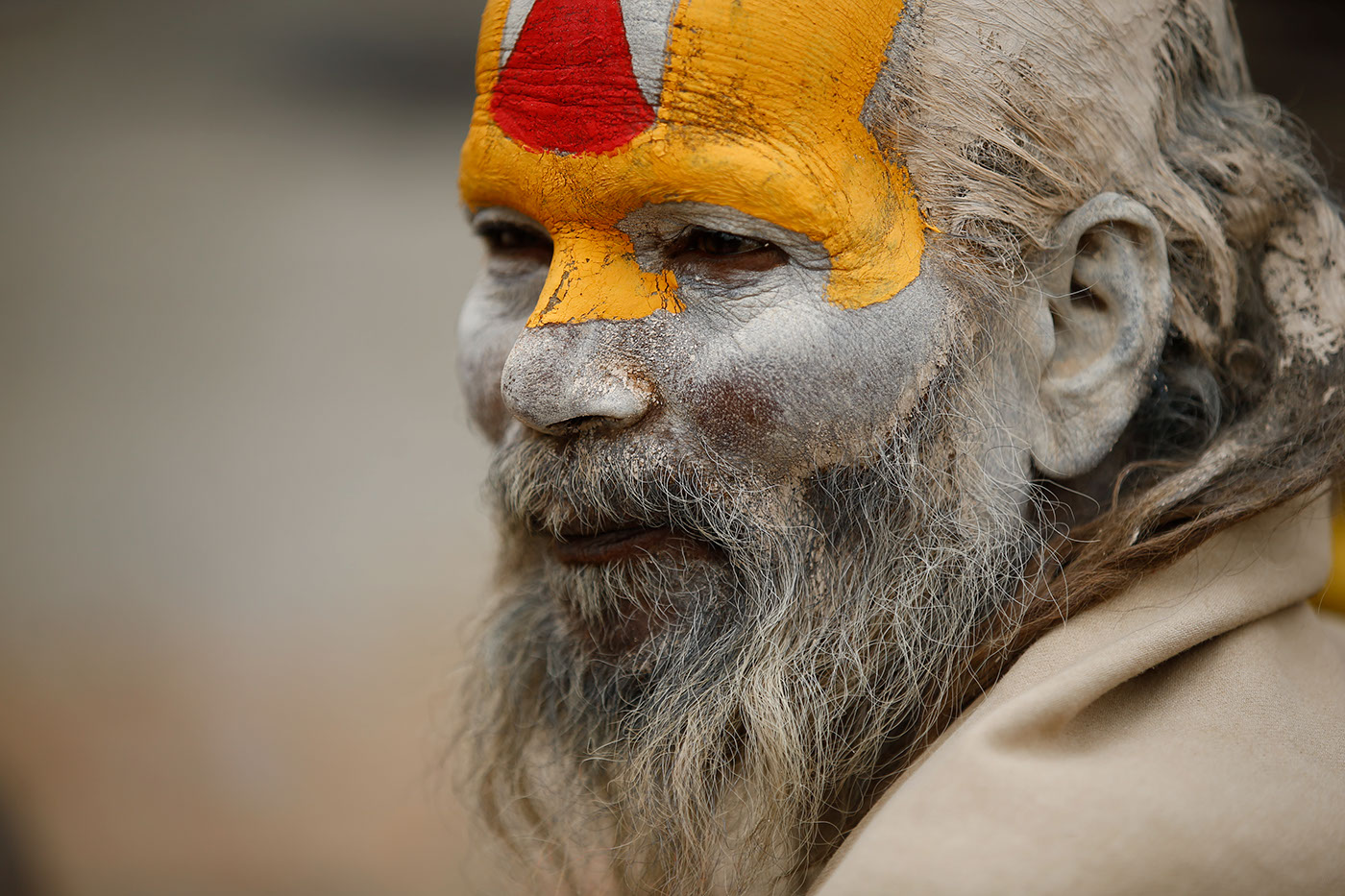
Gautam began his career as an intern at the Kathmandu Post and now works as a full-time photographer for the Himalayan Times. His photojournalist background has shaped his art. Many of his own works examine the country’s social issues, such as the series Air Pollution in Nepal, Life at a Brick Kiln, and the LGBT Community in Nepal in Pictures. Through his lens, he unearths stories that show the different, and often hidden, sides of his country. “Nepal is so culturally rich,” he says. “And the opportunity to bring these cultural stories to life is what inspires me as a photojournalist.”
过去在《加德满都邮报》(The Kathmandu Post)的实习工作让 Skanda 正式步入新闻摄影的领域,现在则在《喜马拉雅时报》(The Himalayan Times)担任摄影记者。而他同时也是一名相当关心社会的摄影师,在其他拍摄项目里,例如《尼泊尔的空气污染》(Air Pollution in Nepal)、《搬砖人》(Life at a Brick Kiln)、以及《尼泊尔LGBT 人群图片》(the LGBT Community in Nepal in Pictures)等等,通过他张力十足、色彩鲜明的照片,我们得以一窥尼泊尔最真实而美丽的一面。“尼泊尔是一个拥有多元宗教信仰和文化的美丽国家,在这里做一个摄影师的好处就是总是有拍不完的题材。”Skanda 说道。
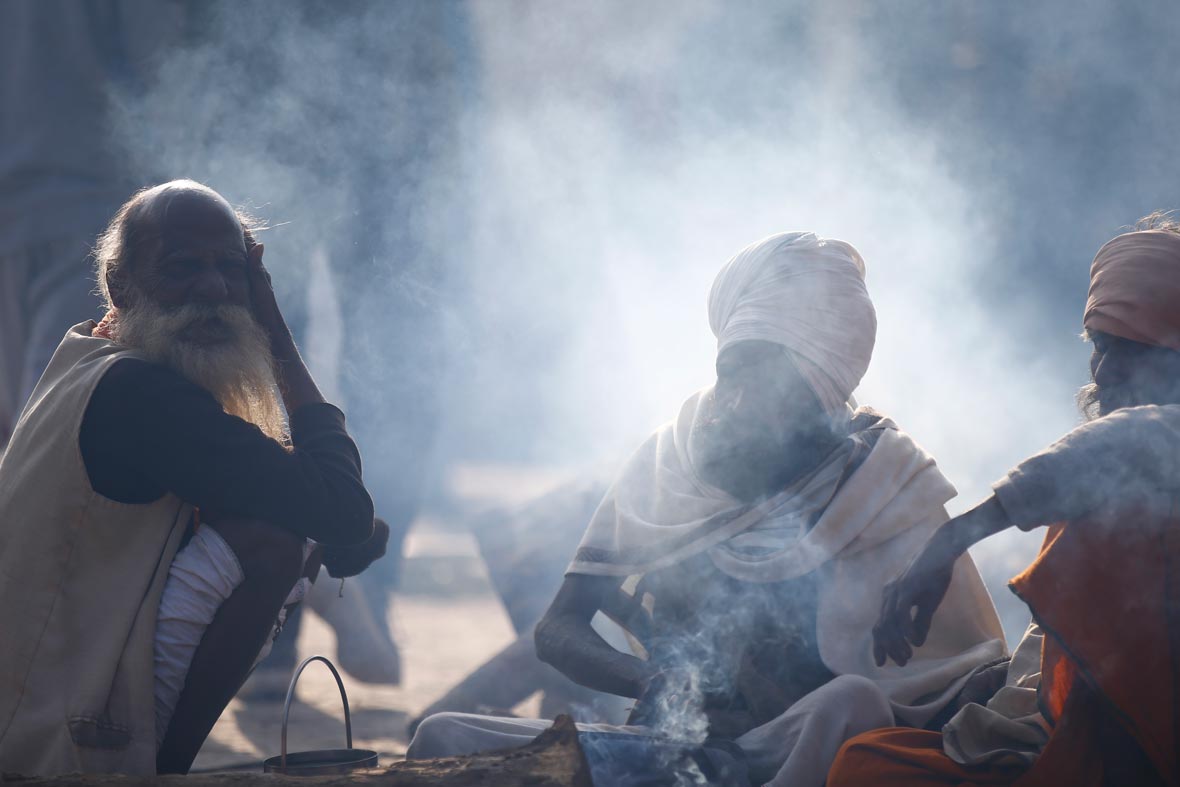

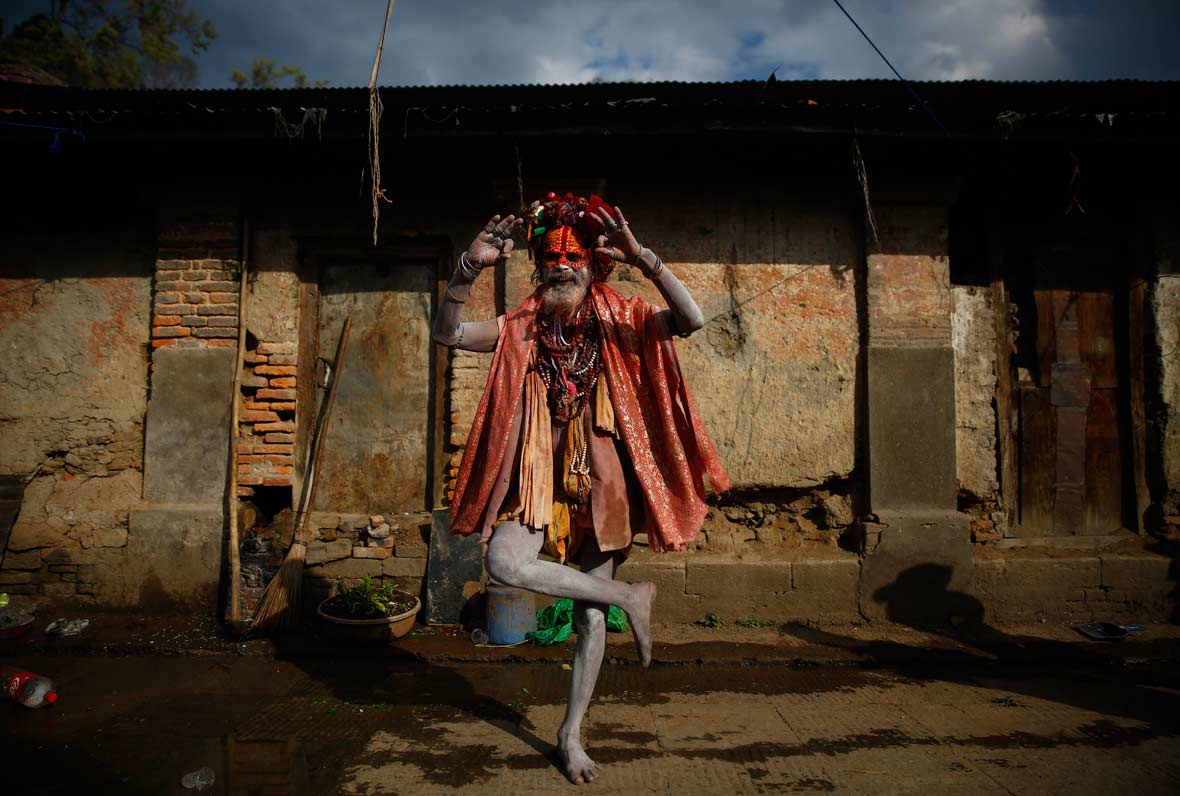
Like our stories? Follow us on Facebook and Instagram.
Instagram: @skandagautam
Behance: ~/skandagautam
Contributor: Yang Yixuan
English Translation: David Yen

